#brigid of kildare
Text
Imbolc Altar Ideas & Correspondences

Imbolc, also known as Candlemas or Brigid's Day, marks the halfway point between the winter solstice and the spring equinox. It's a time to celebrate the returning light and the awakening of the Earth.
Altar Decorations:
Candles: Imbolc is strongly associated with the element of fire. Decorate your altar with candles in shades of white, yellow, and light blue to represent the increasing daylight.
Brigid's Cross: Craft or purchase a Brigid's Cross, a traditional symbol associated with the Celtic goddess Brigid. Hang it on your altar as a protective charm.
Seasonal Flowers: Place early spring flowers like snowdrops, crocuses, and daffodils on your altar. These symbolize the first signs of life returning to the land.
Herbs: Incorporate herbs such as rosemary, thyme, and cinnamon for their purifying and invigorating properties. Bundle them together with a red or white ribbon.
Seeds: Represent the potential for growth by adding a dish of seeds to your altar. Consider seeds associated with early spring crops like wheat or herbs.
Imbolc Symbols: Include symbols like lambs, ewes, and the sun to capture the essence of this seasonal transition.
Candle Holders: Choose unique candle holders or lanterns to enhance the ambiance. Consider using candle holders in the shape of suns, stars, or nature-inspired designs.
Divination Tools: Add divination tools like tarot cards or runes to your altar for seeking guidance during this transitional period.
Symbolic Stones: Integrate crystals such as citrine for abundance, aquamarine for clarity, and moonstone for intuition. Arrange them aesthetically around your altar.
Feathers: Symbolizing air and spirituality, feathers can be incorporated to invoke the energy of the season. Choose feathers from birds associated with the goddess Brigid, like swans or owls.
Artwork: Display artwork or illustrations that resonate with the themes of Imbolc. This could include depictions of Brigid, snow-covered landscapes, or symbols of growth and renewal.
Imbolc Incense: Craft or purchase incense blends with scents like frankincense, myrrh, and chamomile to fill your sacred space with a soothing and purifying aroma.
Correspondences
Goddess Brigid: Imbolc is sacred to Brigid, the Celtic goddess of hearth, home, and inspiration. Invoke her energy for healing, creativity, and protection.
Colors: White, yellow, light green, and light blue are associated with Imbolc. Use these colors in candles, altar cloths, and decorations to align with the festival's energy.
Stones: Crystals such as amethyst, garnet, and clear quartz resonate with Imbolc's energies.
Foods: Dairy products, especially cheese, and foods made with seeds like bread or muffins are fitting for Imbolc. Set offerings on your altar or incorporate them into your celebration feast.
Water: Imbolc is also associated with the element of water. Include a small bowl of water on your altar to symbolize purification.
Creativity Symbols: Imbolc is a time for inspiration and creative endeavors. Include symbols of your creative pursuits, such as a paintbrush, musical instrument, or writing quill.
Anointing Oils: Create or purchase anointing oils infused with herbs like lavender, rosemary, and frankincense. Use them to anoint candles, tools, or yourself during Imbolc rituals.
Animal Representations: Incorporate figurines or images of animals associated with Brigid, such as lambs, cows, or swans, to honor her connection to the animal kingdom.
Wheat or Corn Dolls: Craft small dolls from wheat or corn husks, symbolizing the harvest to come. Place them on your altar as a representation of the Earth's fertility.
Bell or Chimes: Hang a bell or wind chimes near your altar to symbolize the awakening of nature and the stirring of life. Ring it during your Imbolc rituals to mark significant moments.
Decorative Cloth: Choose an altar cloth with intricate patterns or symbols related to Imbolc, such as suns, wheels, or Brigid's crosses, to add a touch of magic to your sacred space.
May you find warmth in the returning light. <3
#pagan#witchcraft#paganism#witch#occult#wicca#dark#magick#neopagan#wiccan#imbolc#february#witchblr#imbolg#brigid of kildare#goddess brigid#st brigid
668 notes
·
View notes
Text

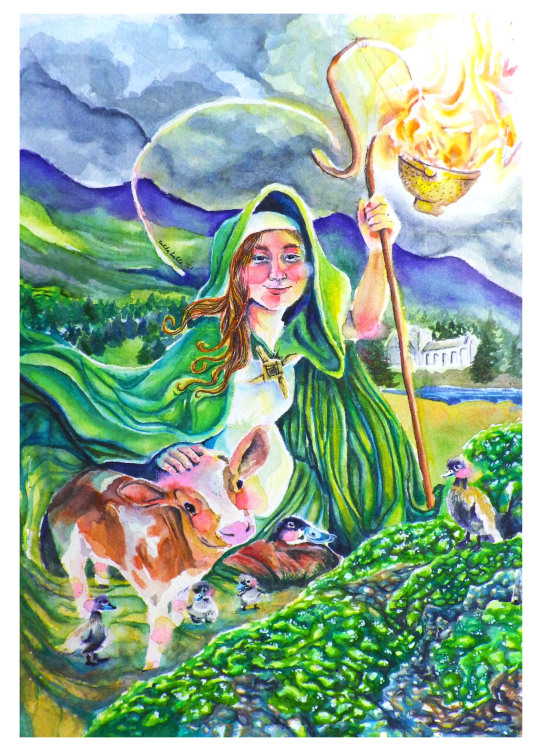
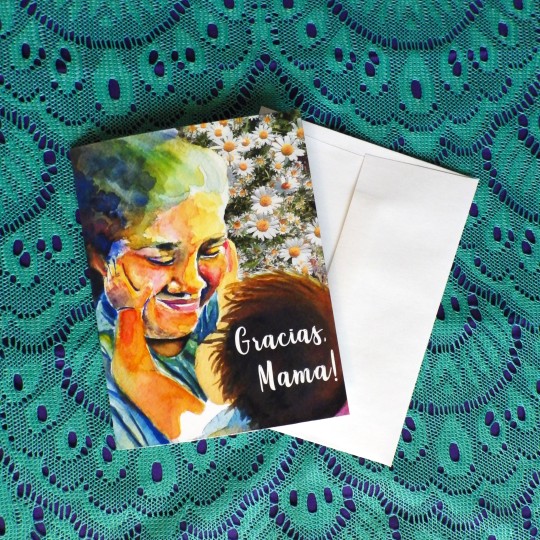


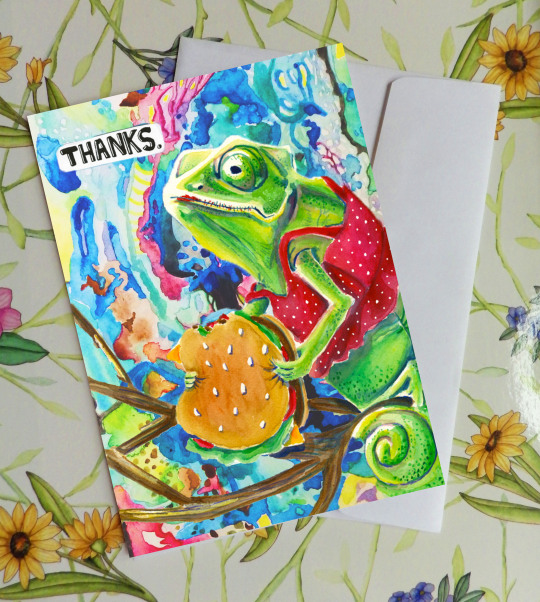
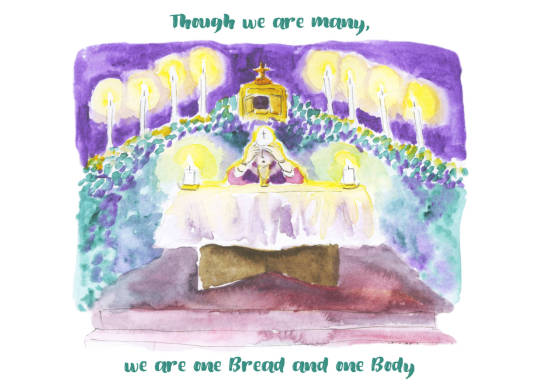
I wanted to share some of the greener greeting cards I have in my online shop now that it actually is starting to feel like spring here in New Jersey!
Floral Crucifix Card
St. Brigid of Kildare Card
Gracias, Mama Card (New Card!)
Floral Thank You Card
Notre Dame Delle Terre Card
Thank You Chameleon Card
Midnight Mass/Communion Card (New Card!)
#catholic cards#catholic#catholic art#christian greeting cards#christian tumblr#catholic tumblr#art#baptism#communion#first communion card#thank you cards#gracias#mary#mother of god#st. brigid#brigid of kildare#flowers#floral#watercolors#watercolor cards#cella bella illuminations#cella bella illustration#shop small#small business#not etsy
13 notes
·
View notes
Text
also the implication that St. Brigid was gay (it's not *really* implied but I choose to believe so, if her relationship with Dar Lughdach isn't gay then idk what is)

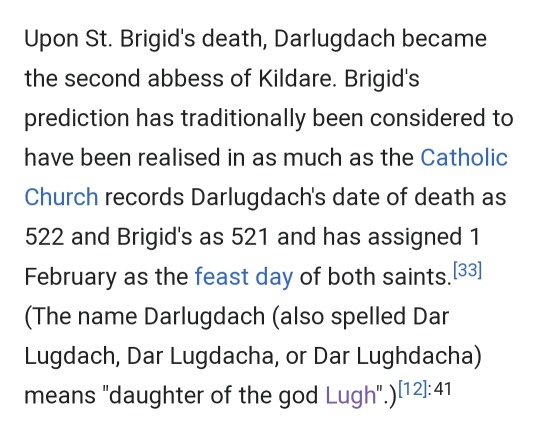
17 notes
·
View notes
Text
Ireland had two Goddesses make it through Christianization intact, one did so very pleasantly.
In the case of Ireland there are two Goddesses whose nature as Goddesses largely made it through the Christianization filter intact. One of them retained worship as a Saint, the other became the archetypal Faerie Queen and was demonized. The one worshiped as a Saint is Brigid, daughter of the King of the Tuatha de Danaan, the Irish Gods. As a Goddess and a Saint She is essentially a solar goddess befitting Her Father, and as St. Brigid of Kildaire very much endured Christianization intact and became a central point of Irish Catholicism much as the Virgin of Guadalupe is a Mesoamerican Goddess rewritten into the Virgin Mary.
This was part and parcel of Christianization in practice, when it switched from the brute force 'obey or be slaughtered' to a more subtle 'destroy what we can't co-opt and turn what we can into saints' method.
#lightdancer comments on history#lightdancer comments on literature#women's history month#europe and women's history#ireland and women's history#brigid goddess#brigid of kildare#the goddess in theory and practice
9 notes
·
View notes
Text
9. Of the Pregnant Woman Blessed and Spared the Birth-Pangs
"1. With a strength of faith most powerful and ineffable, [Brigit] blessed a woman who, after a vow of virginity, had lapsed through weakness into youthful concupiscence, as a result of which her womb had begun to swell with pregnancy. In consequence, what had been conceived in the womb disappeared and she restored her to health and to penitence without childbirth or pain.
2. And, in accordance with the saying 'All things are possible to those who believe', she went on working countless miracles every day without ever proving anything impossible."
-Cogitosus, Life of Saint Brigit (translated by Sean Connolly and J.M. Picard, 1987)
This translation is in my personal files and I can send a copy to you upon request. If you want to thank me, consider a donation to The Brigid Alliance.
#Brighid#Brigid#Brigit#Bríd#Cogitosus#Cogitosus's Life of St. Brigit#Vita sancta Brigide#abortion#abortion miracles#protectors of women#justice goddesses#healing goddesses#Brigid of Kildare#Brigid of Ireland#Irish saints#Irish goddesses#Brighidine paganism#gabhaim molta Bríde#thank you Lady
11 notes
·
View notes
Text
holy saint brigid, midwife and healer, foster mother of christ, pray for us. you once showed mercy and compassion to a pregnant woman who was not in a position to have a child at that time; you ended her pregnancy without judgement, allowing her to make her own choice about her family and her body. in the same way, please show compassion and give aid without judgement to all those pregnant people who are going to suffer indignity, illness, loss of autonomy, and death under this decision by the US supreme court. dearest brigid, pray for us!
5 notes
·
View notes
Text
Brigid, Goddess of the Storm?
This morning, the wind whipped through my little garden at gale force. Rain pelted the long, narrow window that cast watery gray light on my living room. For all the violence of the storm outside, I sat cozily before my fireplace, sipping coffee and contemplating how the storm reminded me of Brigid.
While we know Brigid as a goddess of spring, healing, fire, and fertility, it isn't a far leap to see her as a storm goddess, too. Might her blacksmith's hammer, like Thor's, be said to produce the sound of thunder? Read on to find out why storms are a powerful but often-overlooked symbol of Brigid.
Brigid is associated with the coming of the new season. As the thunder and rain of a storm roll in, it can be seen as a reminder that spring is coming and the earth is being renewed. The storm brings with it fresh air and new life, reminiscent of Brigid’s role as a fertility (or, more accurately, midwife) goddess. It is said that the fertility of the land greatly increases when Brigid visits, and the same could be said of the early morning storm.
The storm can also be seen as a reminder of Brigid’s strength and power. Storms are often seen as wild and untamable. The early morning storm is a reminder of the power and strength that Brigid brings with her.
Brigid is also seen as a goddess of healing, and the storm can be seen as an embodiment of her healing power. The rain of the storm washes away old, stagnant energies, bringing in new, fresh energies to replace them. This can be seen as Brigid’s healing power, washing away pain and bringing new life and healing.
In a culture where we hide indoors during storms, this wild goddess can remind us of nature's grandeur, the power of the natural world, and the simple pleasures of being cozy in the midst of it. Thank you, Brigid!
1 note
·
View note
Text

Saint Brigid's Cathedral, Kildare Town, Ireland and the round tower and high cross on a sunny day.
#ireland#vsco#landscape#vscocam#irish#photographers on tumblr#photography#travel#kildare#gaa#squires gannon#panorama#panoramic ireland#county kildare#irish buildings#heritage#saint brigid#saint brigid's cathedral#round tower#sam maguire cup
42 notes
·
View notes
Text

Theresa Kilmurray, of the Brigidine Congregational Leadership, center, with Brigidine sister, Louise Cleary, right, carries a revered relic of St. Brigid, draped in red, home to Kildare, Ireland, Sunday, Jan. 28, 2024. Accompanying them are three girls portraying the medieval Irish knights who, tradition says, brought a relic of St. Brigid to a church in Portugal. Pilgrims and locals welcomed the relic back to Brigid's hometown, about a millennium after her body had been moved from Kildare to a secret grave for safety from Viking attacks. The ceremony is part of the 1,500th anniversary commemoration of the death of the woman some call “the matron saint of Ireland.” (AP Photo/Peter Morrison)
14 notes
·
View notes
Text
The Feast Day of St Brigid | Imbolc – The traditional first day of Spring in Ireland
St Brigid of Kildare or Brigid of Ireland (c. 451-525) is one of Ireland’s patron saints along with Saints Patrick and Colm Cille. Her feast day is 1 February or Imbolc, the traditional first day of spring in Ireland. She is believed to have been an Irish Christian nun, abbess, and founder of several convents. The feast day of of the patron saint will be celebrated with a state holiday starting…

View On WordPress
#Co. Kildare#Feast Day of St Brigid#Imbolc#Patron Saint of Ireland#Sculptor Annette McCormack#St Bridgid’s Well#Statue of St Brigid
17 notes
·
View notes
Text
SAINT OF THE DAY (February 1)

On February 1, Catholics in Ireland and elsewhere will honor Saint Brigid of Kildare, a monastic foundress who is – together with Saint Patrick and Saint Columcille – one of the country’s three patron saints.
St. Brigid directly influenced several other future saints of Ireland, and her many religious communities helped to secure the country's conversion from paganism to the Catholic faith.
She is traditionally associated with the Cross of St. Brigid, a form of the cross made from reeds or straw that is placed in homes for blessing and protection.
Some Eastern Catholics and Eastern Orthodox Christians also celebrate her feast.
St. Brigid has been profiled many times by both ancient and modern writers.
However, it is notoriously hard to establish the historical details of her life, and the various accounts make many conflicting claims.
According to one of the more credible biographies of Brigid — Hugh de Blacam's essay in “The Saints of Ireland” — on which the following account is based, most historians place her birth around the year 450, near the end of Saint Patrick's evangelistic mission.
Brigid was born out of wedlock, the daughter of a pagan chieftain named Dubthach and a Christian slave woman named Broicsech.
The chieftain sold the child's pregnant mother to a new master but contracted for Brigid to be returned to him eventually.
According to de Blacam, the child was probably baptized as an infant and raised as a Catholic by her mother.
Thus, she was well-formed in the faith before leaving Broicsech's slave-quarters at around age 10 to live with Dubthach and his wife.
Within the new circumstances of the chieftain's household, Brigid's faith found expression in feats of charity.
From the abundance of her father's food and possessions, she gave generously to the poor.
Dubthach became enraged, threatening to sell Brigid, who was not recognized as a full family member but worked as a household servant to the King of Leinster.
But the Christian king understood Brigid's acts of charity and convinced Dubthach to grant his daughter her freedom.
Released from servitude, Brigid was expected to marry. But she had other plans, which involved serving God in consecrated life.
She even disfigured her own face, marring her beauty in order to dissuade suitors.
Understanding he could not change her mind, Dubthach granted Brigid permission to pursue her plan and material means by which to do so.
Thus did a pagan nobleman, through this gift to his illegitimate daughter, play an unintentional but immense part in God's plan for Ireland.
While consecrated religious life was part of the Irish Church before Brigid's time, it had not yet developed the systematic character seen in other parts of the Christian world by the fifth century.
Among women, vows of celibacy were often lived out in an impromptu manner, in the circumstances of everyday life or with the aid of particular benefactors.
Brigid, with an initial group of seven companions, is credited with organizing communal consecrated religious life for women in Ireland.
Bishop Mel of Ardagh – St. Patrick's nephew, and later “St. Mel” – accepted Brigid's profession as a nun.
According to tradition, the disfigurement she had inflicted on her face disappeared that day, and her beauty returned.
St. Mel went on to serve as a mentor to the group during their time at Ardagh.
Around the time of his death in 488, Brigid's community got an offer to resettle.
Their destination is known today as Kildare (“Church of the Oak”), after the main monastery she founded there.
Brigid's life as a nun was rooted in prayer, but it also involved substantial manual labor: cloth-making, dairy farming, and raising sheep.
In Ireland, as in many other regions of the Christian world, this communal combination of work and prayer attracted vast numbers of people during the sixth century.
Kildare, however, was unique as the only known Irish “double monastery” — it included a separately-housed men's community, led by the bishop Saint Conleth.
From this main monastery, Brigid's movement branched out to encompass a large portion of Ireland.
It is not clear just how large, but it is evident that Brigid traveled widely throughout the island, founding new houses and building up a uniquely Irish form of monasticism.
When she was not traveling, many pilgrims – including prominent clergy and some future saints – made their way to Kildare, seeking the advice of the abbess.
Under Brigid's leadership, Kildare played a major role in the successful Christianization of Ireland.
The abbess' influence was felt in the subsequent era of the Irish Church, a time when the country became known for its many monasteries and their intellectual achievements.
St. Brigid of Kildare died around 525.
She is said to have received the last sacraments from a priest, Saint Ninnidh, whose vocation she had encouraged.
Veneration of Brigid grew in the centuries after her death and spread outside of Ireland through the work of the country's monastic missionaries.
12 notes
·
View notes
Text

Happy feast day, St. Brigid!
#feast day#st. brigid of kildare#catholic#irish#saint#art print#art#catholic art#ducks#baby cow#calf#ireland#green#baby duckies#st. brigid's cross#art sale
31 notes
·
View notes
Text


About St Brigid of Ireland
About St Arnold Janssen
Losers' Bracket Round 1
#st brigid#st arnold janssen#catholic saint tournament#polls#tumblr bracket#tumblr tournament#christianity#theology#catholic saints#tumblr polls#catholicism#catholic#st brigid of ireland#st brigid of kildare
17 notes
·
View notes
Text
hhhhhh I submitted my St Brigid portrait to Herstory Ireland's open call for artists for the light show thing they do in County Kildare every year for Lá Fhéile Bríd (this one being super special because it's the 1500th anniversary of her birth) AND THEY PICKED MINE (top left)

the post on their Facebook reads:
We are delighted to reveal some of the chosen artwork for the #Herstory Light Shows as part of the Brigid 1500 Festival in Kildare on the 31st January and the 1st February 2024.
Today we are sharing the artists Margaret McKenna @celticmyths
Sue Ellen Parkinson sue.ellen.parkinson
Maeve Finn @maevefinnartist
Ana Colomer @artwithanaennis
Aoife Cawley @aoifecawleyart
Catherine Mc Gagh @cmcgaghart
"This year we were thrilled to receive so many new incredible artworks from Ireland, Northern Ireland, USA, Canada, Germany, and Great Britain. Over the coming days we will share more of the artists.
In many ways Ireland is still catching up with the visionary Saint Brigid, 1500 years after she lived. It’s wonderful to see her continue to spark artists and activists in Ireland and across the world today. Brigid is a bottomless well of inspiration and wisdom!
This year’s theme is the Old Irish saying: 'There’s room for everyone under Brigid’s cloak'. In these divisive times, St. Brigid calls us to remember our true humanity, bringing a message of inclusion, harmony, and healing.
The Goddess Brigid was a pan-European Celtic goddess, honoured from Turkey to Spain. Saint Brigid ran a thriving monastery in Kildare and her true Christian message spread through pilgrimages far across Europe.
This year Herstory is delighted to partner again with Kildare County Council, CreativeIrl and Dodeca Ireland for the wonderful Brigid 1500 Festival in celebration of St. Brigid’s 1500 year anniversary.
Join us for the spectacular illuminations in Clane, Athy, Newbridge and Naas, with performances by fire-dancers on the 31st January and the 1st February 2024.
@wicklowwillow will also host family friendly Brigid Cross-making and Brat Bhride workshops in Newbridge and Clane. You can sign up for these free workshops at the event on the night.
All events are free and open to the public.
For more details see www.herstory.ie"
if any of my Irish followers plan on going to this event PLEEEEEASE send me pictures!
5 notes
·
View notes
Text

Made this to fight off art block and I’m kinda just done with it but also not that satisfied because what is that composition.. this mostly features deities associated with alcohol, though some aren’t. It was kinda just me having fun with things and working on more designs.
I’ve grown up around alcohol in a very healthy sense compared to most others who would say that. My family drinks a fair amount, but never to a point where that hinders any of our relationships and helps me learn about safe drinking for when I’m legally allowed to do it. So even though I’m not legally allowed to consume alcohol characters and representations associated with it are extremely interesting to me.
anyways, this started because I was thinking about the issue of Greco Roman syncretism specifically in regards to Dionysos, Bacchus and Liber Pater. Dionysos is Bacchus, it’s one of his most common epithets. Liber Pater is syncretic in Roman sources and very similar, so it isn’t off putting to read about Dionysos just given his name. But it’s not exactly correct to call them the same because we also have recorded sources against treating them as syncretic. So I got thinking, and I wanted to make a piece of wine deities chilling. Then it got bigger, more alcohol deities (and St. Brigid of Kildare because why not?) we’re added, Bes is also there because I think he’s interesting, and so my art block was very unhelpful. But it’s something to get back into the swing of things so!
featuring Liber Pater (I gave him hair based on green grapes and white wine and tried to capture a slightly queerer vibe of my local Italian fuckboys) Dionysos (why wouldn’t I?), Nephthys, Silenus and Bes because old people like to party too, a depiction of Jesus based on old artworks that would 100% get me kicked out of a church if they knew, St. Brigid of Kildare because we Stan a Queen who punished selfish rich people and provides safe abortions (which yes that is an out of context joke but lmao it’s based on something also she likely originates from the pagan goddess so 💅🏼 Rip catholic purists), Sucellus, and Ninkasi, holding a glass beer cup based on some of the first in Mesopotamia but I managed to fuck it up.
it’s not perfect. I’m not proud. But eh
#art#failed art kinda#ramblings#mythology#greek mythology#roman mythology#egyptian mythology#christian mythology#celtic mythology#mesopotamian mythology#dionysus#dionysos#Bacchus#liber pater#traditional art#nephthys#bes#silenus#jesus christ#Saint Brigid of kildare#Sucellus#Ninkasi#jesus was a heretical Jew fight me on it I dare you#This also gives anarchist if you dig deep haha#Markers
15 notes
·
View notes